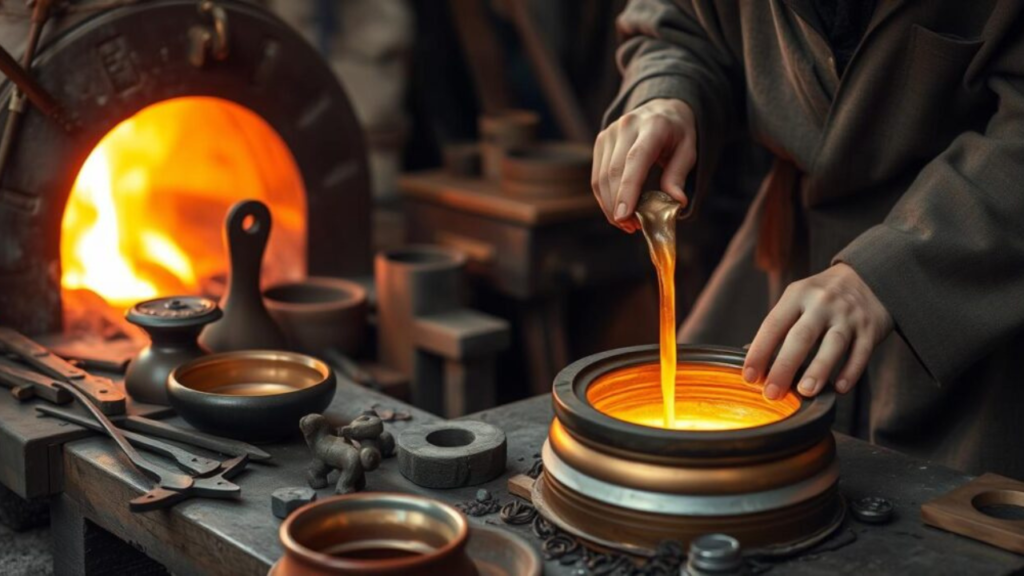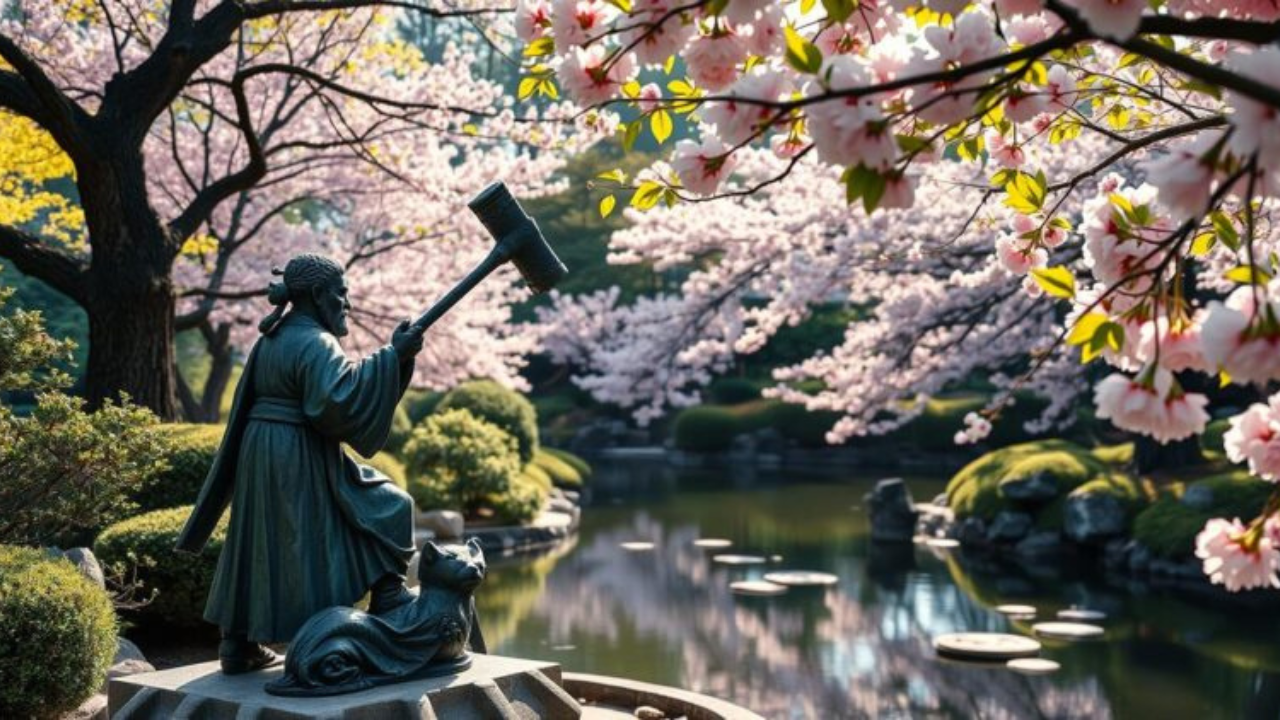Ikoku bronze sculptures hold an esteemed place in the history of Japanese art. Their intricate designs and cultural significance weave a narrative that spans centuries. This art form’s legacy is deeply rooted in the craftsmanship and spirituality of ancient Japan. This article will delve into the history, techniques, and symbolic meaning of Ikoku bronze sculpture, shedding light on their fascinating journey through Japanese art history.
The Origins of Ikoku Bronze Sculpture
“Ikoku” refers to a unique style of bronze sculptures that emerged during Japan’s Edo period (1603-1868). This style was influenced by interactions with foreign cultures, mainly through trade and diplomatic relations. Japanese traditions and the external influences of countries like China, Korea, and the West often inspired the bronze sculptures created during this period.
During the Edo period, Japan was relatively isolated from the rest of the world but still engaged in limited contact with foreign nations through the port of Nagasaki. This exposure to foreign aesthetics and techniques sparked new thinking about art and craftsmanship, influencing the development of Ikoku bronze sculpture.
Initially, these sculptures were used for decorative and ceremonial purposes in temples, shrines, and palaces. Over time, they began to take on a more personal significance, becoming treasured pieces in private collections and contributing to the cultural dialogue between Japan and the world.
The Technique Behind Ikoku Bronze Sculptures

Creating Ikoku bronze sculptures is an intricate process that requires immense skill and attention to detail. The technique of casting bronze in Japan has evolved over centuries, with the Ikoku style adding its unique twists to traditional methods.
1. Casting Process
The casting process for Ikoku bronze sculptures is similar to other traditional Japanese bronze works. It begins with creating a model of the sculpture, usually in clay or wax, which is then coated in a layer of fine sand or clay. Once fully covered, the model is heated in a kiln to harden the mold. The bronze is then melted and poured into the mold, which cools and solidifies into the desired shape.
The challenge with Ikoku bronze sculptures lies in the fine details and precision required to capture intricate features. Artists often use specialized tools to carve and refine the surface after casting, creating textures and details that enhance the piece’s sculptural qualities.
2. Patina and Finish
The patina on an Ikoku bronze sculpture plays a crucial role in its appearance and longevity. Over time, bronze naturally develops a greenish patina due to oxidation. However, artisans can also apply chemical treatments to control aging and create specific colors and textures on the surface. Depending on the intended effect, the finish may range from a shiny, polished look to a more matte or rough texture.
Patina enhances the sculpture’s visual appeal and adds to its historical value. As the sculpture ages, the patina deepens, enriching it with layers of history and meaning.
3. Design Elements
Ikoku bronze sculptures are often characterized by their detailed representation of human figures, animals, and deities. They feature a combination of flowing lines, delicate features, and a sense of movement that reflects the cultural values of the time. The designs may include elements of nature, folklore, and religious symbolism, further illustrating the sculpture’s spiritual and artistic significance.
Many sculptures depict gods, mythological creatures, and historical figures. The level of realism in these works can vary, with some artists opting for highly stylized interpretations while others maintain a more naturalistic approach.
Symbolism in Ikoku Bronze Sculptures
Ikoku bronze sculptures often carry profound symbolic meanings intended to communicate spiritual and philosophical concepts to the viewer. The use of specific motifs, animals, and figures in these sculptures was not random but carefully chosen to convey more profound messages.
1. Spiritual Themes
Many Ikoku bronze sculptures were created for religious or ceremonial purposes to invoke divine protection or enlightenment. Figures of deities, such as the Buddhist Bodhisattvas or Shinto gods, were commonly represented in bronze to emphasize their importance and power. The choice of bronze as the medium for these figures was symbolic, as the metal was believed to hold sacred properties that could channel spiritual energy.
2. Nature and the Cosmos
Nature also played a significant role in the symbolism of Ikoku bronze sculptures. The animals, plants, and landscapes depicted in these works reflected Japan’s deep connection to nature and the belief in the interconnectedness of all living things. The sculptures often symbolized harmony with the natural world and the cosmos, a recurring theme in Shinto and Buddhist thought.
3. Cultural Heritage and Identity
Ikoku bronze sculptures also represent Japan’s ongoing negotiation of its cultural identity. As the nation interacted more with other countries, the infusion of foreign artistic elements into these sculptures represented Japan’s ability to preserve its unique heritage while incorporating new ideas. The fusion of foreign and domestic styles allowed for the development of a distinctive, hybrid artistic form that resonated with the global spirit of the time.
The Influence of Ikoku Bronze Sculpture on Contemporary Japanese Art
While Ikoku bronze sculptures are primarily associated with the Edo period, their influence can still be seen in modern Japanese art. Contemporary sculptors often look to these sculptures’ detailed craftsmanship and intricate design for inspiration. The continued reverence for bronze as a medium and the rich symbolic language associated with Ikoku sculptures are essential foundations for modern artistic practices in Japan.
Furthermore, Ikoku bronze sculptures have also attracted the interest of art collectors, museums, and scholars worldwide, further solidifying their place in global art history. The ongoing research into these sculptures continues to uncover new facets of their meaning, artistry, and influence on other art forms.
Conclusion: The Enduring Legacy of Ikoku Bronze Sculptures
Ikoku bronze sculptures are much more than mere works of art. They are windows into Japan’s soul, revealing the cultural, spiritual, and historical forces that shaped the nation for centuries. With their intricate craftsmanship, rich symbolism, and enduring beauty, these sculptures are a testament to Japanese artisans’ skill and vision. Understanding the history and significance of Ikoku bronze sculptures gives us a deeper appreciation of Japan’s artistic legacy and its place in the global artistic dialogue.
FAQs About Ikoku Bronze Sculptures
1. What is the Ikoku bronze sculpture?
Ikoku bronze sculpture is a unique style of bronze art that emerged during Japan’s Edo period. It was influenced by both traditional Japanese and foreign artistic traditions. It typically involves intricate designs, detailed figures, and symbolic elements representing cultural, spiritual, and natural themes.
2. How are Ikoku bronze sculptures made?
Ikoku bronze sculptures are made through a casting process in which molten bronze is poured into a clay or sand mold. After cooling, artisans refine the sculpture by carving details and applying a patina to achieve the desired finish and texture.
3. What are the symbolic meanings behind Ikoku bronze sculptures?
Ikoku bronze sculptures often have spiritual and symbolic meanings. They represent deities, animals, and elements of nature and are intended to convey concepts like divine protection, harmony with nature, and the interconnectedness of all things.
4. How has Ikoku bronze sculpture influenced modern Japanese art?
The techniques and design elements of Ikoku bronze sculpture continue to inspire contemporary Japanese artists. Modern sculptures often draw on these ancient works’ intricate craftsmanship and symbolic language, ensuring their lasting influence on Japanese art.
5. Where can I see Ikoku bronze sculptures today?
Ikoku bronze sculptures can be found in museums, galleries, and private collections worldwide. They are particularly displayed in institutions that focus on Japanese art and cultural heritage, offering visitors an opportunity to engage with this rich artistic tradition.
You May Also Read: https://ventsweekly.news/caley-kouko/
